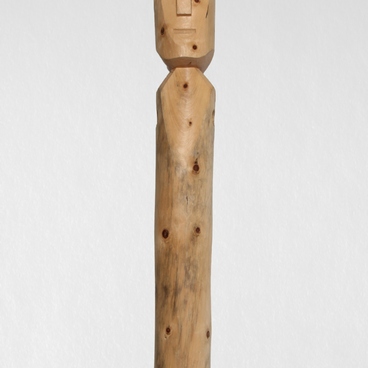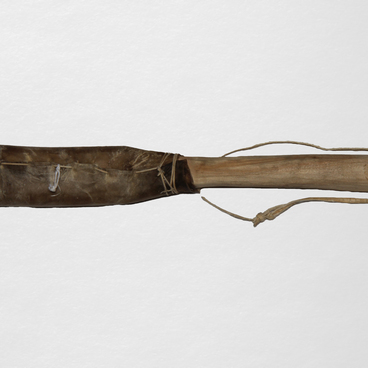The indigenous people of the North sewed winter clothes from different parts of the reindeer hide. The structural features of the skin and hair of this animal allowed clothes made from its fur to withstand any cold.
The winter shoes of the Khanty, Mansi and Nenets were special boots called “kisy”. They were made mainly of “kamus” — the skin taken from the leg of a deer. This fur was considered the most suitable for shoes, since the hair was quite tough, repelled snow and dirt, and did not absorb moisture. Proper knee-high kisy were able to keep the feet warm and dry even at temperatures below 50–60 degrees.
Kamus was usually processed separately from large skins. Unlike the thicker skins of elk or wild boar, thin deer skins could be dried even in winter. To free the skin from excess moisture, the kamuses were taken out into the cold and stretched a little. This ensured that the skin did not shrink.
Before the tanning, the skin was moistened and softened from the side of the flesh — the layer of subcutaneous tissue. To make the skin pliant, the Khanty used fish or deer fat, the contents of a deer’s stomach, and later began to use sour dough. Then, they took the softened kamus and carefully scraped the skin with scrapers, trying not to break the skin. From time to time, it was kneaded with hands — the longer, the better. Well-made kamus became soft, elastic and retained heat better.
Kamuses were often hung over the hearth during the manufacturing process so that they were smoked. It was believed that the smoked leather repelled water better and was not attacked by insects.
Kisy were sewn exclusively with fur on the outside, sometimes leaving a little fleece inside the shoe. The strips of kamus were sewn with reindeer tendon threads. The sole was made of “brushes” (the skins between the small and large hooves of a deer), a simple piece of kamus or the thick skin from the forehead of a deer. The latter was used only for the manufacture of men’s shoes, and in women’s shoes such an element was prohibited.
Both adults and children had their kisy decorated with fur mosaics, beaded sewing and embroidery. Often, for additional durability, structural seams were reinforced with multi-colored cloth — a dense woolen or half-woolen fabric.
The winter shoes of the Khanty, Mansi and Nenets were special boots called “kisy”. They were made mainly of “kamus” — the skin taken from the leg of a deer. This fur was considered the most suitable for shoes, since the hair was quite tough, repelled snow and dirt, and did not absorb moisture. Proper knee-high kisy were able to keep the feet warm and dry even at temperatures below 50–60 degrees.
Kamus was usually processed separately from large skins. Unlike the thicker skins of elk or wild boar, thin deer skins could be dried even in winter. To free the skin from excess moisture, the kamuses were taken out into the cold and stretched a little. This ensured that the skin did not shrink.
Before the tanning, the skin was moistened and softened from the side of the flesh — the layer of subcutaneous tissue. To make the skin pliant, the Khanty used fish or deer fat, the contents of a deer’s stomach, and later began to use sour dough. Then, they took the softened kamus and carefully scraped the skin with scrapers, trying not to break the skin. From time to time, it was kneaded with hands — the longer, the better. Well-made kamus became soft, elastic and retained heat better.
Kamuses were often hung over the hearth during the manufacturing process so that they were smoked. It was believed that the smoked leather repelled water better and was not attacked by insects.
Kisy were sewn exclusively with fur on the outside, sometimes leaving a little fleece inside the shoe. The strips of kamus were sewn with reindeer tendon threads. The sole was made of “brushes” (the skins between the small and large hooves of a deer), a simple piece of kamus or the thick skin from the forehead of a deer. The latter was used only for the manufacture of men’s shoes, and in women’s shoes such an element was prohibited.
Both adults and children had their kisy decorated with fur mosaics, beaded sewing and embroidery. Often, for additional durability, structural seams were reinforced with multi-colored cloth — a dense woolen or half-woolen fabric.



